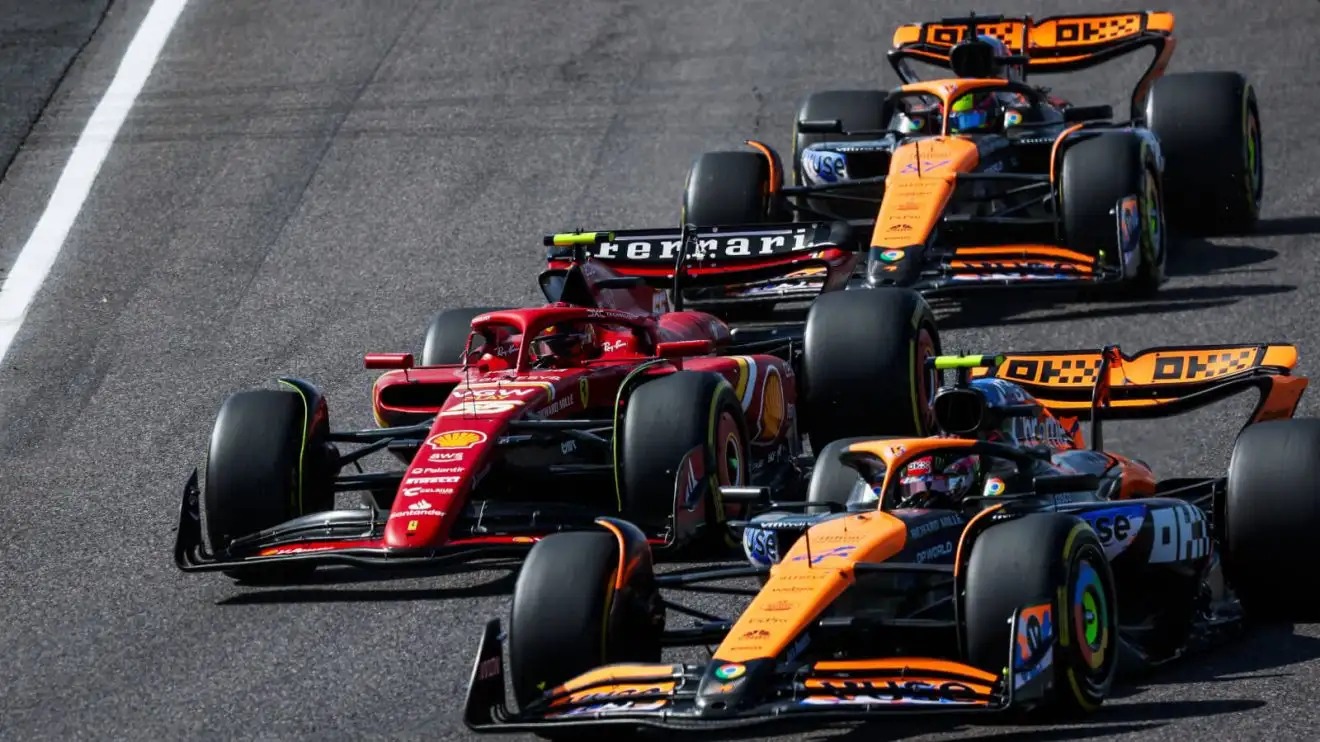Flexi Wings in Formula 1: Why the FIA is Cracking Down in 2025

Flexi wings have become one of the hottest topics in Formula 1 in 2024. Initially, the FIA seemed content to allow teams to push the limits of aerodynamic flexibility, but now they have decided to take action. With a revised version of Technical Directive TD18 set to be fully enforced from the start of the 2025 season, teams will need to adapt quickly. But why has the FIA changed its stance, and what impact will this have on the championship? Let’s dive into the details.
The Role of Flexibility and Aeroelasticity in F1
In Formula 1, engineers constantly search for ways to extract maximum performance within the regulations. Aerodynamic flexibility and aeroelasticity have long been areas of innovation, allowing teams to fine-tune their cars to gain a competitive edge. The FIA regulates these developments through technical regulations and additional technical directives (TDs) that provide further clarification on permitted designs.

One of the key challenges for the FIA is policing aerodynamic flexibility. While static load tests are used to measure compliance, they do not always reflect the true forces experienced on track. To address this, the FIA employs methods such as placing dots on front and rear wings to analyze flex via onboard cameras, requesting teams to submit their wing designs, and tightening test parameters to ensure compliance.
The Introduction of TD18 and Its Impact
A modified version of TD18, originally introduced in 2021, will take full effect from the first race of the 2025 season. This update will limit the amount of inboard flex on the front wing by 1mm and outboard flex by 5mm.
Why Is the FIA Acting Now?
Earlier in 2024, two teams began exploiting aerodynamic flexibility to address handling imbalances. The challenge with ground effect cars is balancing performance across different cornering speeds—too much downforce can cause high-speed oversteer, while too little can result in low-speed understeer.

A flexible front wing can adjust dynamically, maintaining a higher angle at low speeds while flattening out on straights, reducing drag and improving stability. This phenomenon provided a significant advantage, leading to speculation that Mercedes and McLaren were among the first to capitalize on it.
Mercedes’ and McLaren’s Innovations
-
Mercedes potentially introduced flexibility in an upgraded front wing during the Monaco Grand Prix, significantly improving their performance. Given their struggles with car balance in recent seasons, this design may have played a crucial role in their resurgence.
-
McLaren debuted a front wing upgrade in Miami that helped them overcome a lack of top speed and instability in high-speed corners. Their subsequent Austria upgrade reinforced this development direction, helping them achieve one of the fastest cars on the grid.
-
McLaren’s rear wing also came under scrutiny in Baku for its alleged flexing at high speeds, which created a “mini DRS effect.” Though legal at the time, the FIA later asked the team to revise their design.
How the FIA Initially Reacted
Despite growing concerns, the FIA initially allowed front-wing flexibility, with teams such as Ferrari and Red Bull reportedly considering similar upgrades. They also addressed rear-wing flexibility by modifying the 2025 regulations, but no changes were made for the front wing—until now.

Possible Reasons Behind the FIA’s U-Turn
There are several theories as to why the FIA has decided to introduce changes for 2025:
-
McLaren’s Influence: Some speculate McLaren lobbied for the rule changes after realizing that Ferrari and Red Bull could catch up using similar technology.
-
Smaller Teams’ Protests: Flexi wings are expensive to develop, and smaller teams may have pressured the FIA to intervene due to the costs associated with this innovation.
-
Political Maneuvering: Formula 1 has a history of political battles, and this decision may have been influenced by behind-the-scenes lobbying rather than purely regulatory concerns.
The Potential Impact on the Championship
-
Development Waste: Teams that invested heavily in flexi-wing designs may now have wasted time and budget, a critical issue under F1’s cost cap regulations.
-
Competitive Shifts: Front-running teams will likely maximize their flexi-wing advantage in 2024 before adjusting their designs for 2025, while smaller teams may struggle to balance short-term performance with long-term development.
-
Season Disruptions: The introduction of this directive at the start of the 2025 season could impact teams’ long-term car development, forcing them to reallocate resources to ensure compliance.
Could the FIA Have Handled This Differently?
By announcing the change earlier, the FIA could have given teams more time to adapt, reducing financial and strategic disruption. However, as history shows, Formula 1 teams will always push the limits, and regulatory interventions are a common part of the sport.
Conclusion
The flexi-wing saga highlights the constant innovation and political maneuvering in Formula 1. While the FIA’s intervention aims to level the playing field, it may instead shake up the competitive order in unpredictable ways. One thing is certain—this will remain a major talking point throughout the 2024 and 2025 seasons.
Stay tuned for ongoing analysis on this topic.
- Race Weekends
- Teams & Drivers
- Tech & Innovation
- F1 History
- News & Updates
- Fan Opinions & Debates
- Race Locations & Travel
- Merchandise & Memorabilia
- Young Drivers & Future Stars
- Off-Track Stories
- F1 Marketplace
- Esports & F1 Sim Racing
- Behind the Pit Wall
- Rules & Regulations
- Fan Art & Creativity

